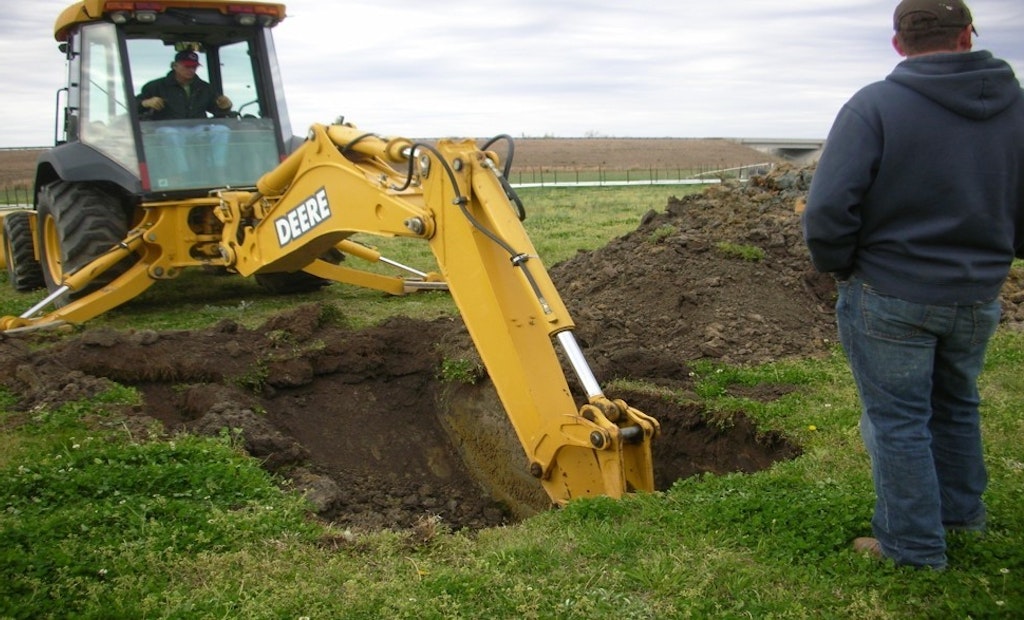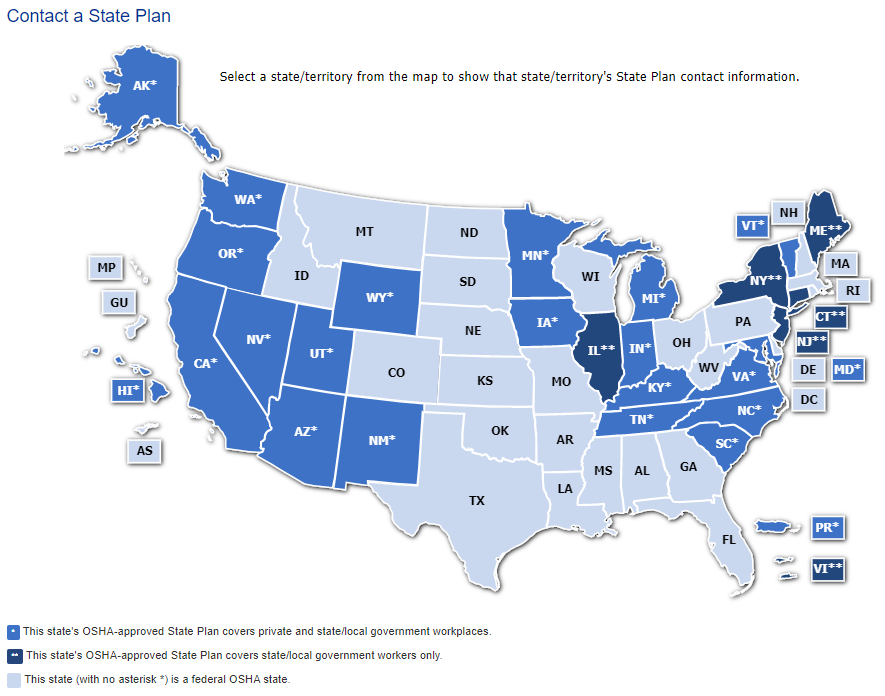Interested in Safety?
Get Safety articles, news and videos right in your inbox! Sign up now.
Safety + Get AlertsSection 18 of the Occupational Safety and Health Act of 1970 encourages states to develop and operate their own job safety and health programs. OSHA approves and monitors state plans and provides up to 50% of an approved plan's operating costs.
There are currently 22 states and jurisdictions operating complete state plans (covering both the private sector and state and local government employees) and four — Connecticut, New Jersey, New York and the Virgin Islands — that cover public employees only. Eight other states were approved at one time but subsequently withdrew their programs.
Most state plans have adopted federal OSHA regulations and standards verbatim. States such as California, Michigan, Oregon and Washington have state plans that differ significantly from federal OSHA. These states have standards that are more stringent than federal OSHA standards or address hazards not covered by OSHA.
The online version allows you to click on your state and go to the local program.
States must set job safety and health standards that are "at least as effective as" comparable federal standards. Most states adopt standards identical to federal ones. States have the option to develop standards covering hazards not addressed by federal standards. A state must conduct inspections to enforce its standards, cover public (state and local government) employees, and operate occupational safety and health training and education programs.
In addition, most states provide free on-site consultation to help employers identify and correct workplace hazards. Upon request, they will conduct programs on the importance of and proper use of adequate safety and health equipment. Employers are strongly encouraged to take advantage of these services. These consultations are provided independent of any enforcement activity regarding hazards that may be identified during the visit. However, if an employer fails to take immediate action to eliminate employee exposure to an imminent danger or fails to correct a serious hazard within a reasonable time, enforcement action may be taken.
More about OSHA’s cooperative programs can be found here.
About the author
Sara Heger, Ph.D., is an engineer, researcher and instructor in the Onsite Sewage Treatment Program in the Water Resources Center at the University of Minnesota. She presents at many local and national training events regarding the design, installation and management of septic systems and related research. Heger is education chair of the Minnesota Onsite Wastewater Association and the National Onsite Wastewater Recycling Association, and she serves on the NSF International Committee on Wastewater Treatment Systems. Ask Heger questions about septic system maintenance and operation by sending an email to kim.peterson@colepublishing.com.
This article is part of a series on safety:
- Focus on Safety: Installers Need to Make Safety a Priority
- Focus on Safety: Federal and State OSHA Standards
- 7 Overlooked Safety Issues for Installers
- Electrical Hazards to Watch for During Septic Repair and Installation
- Focus on Safety: Transporting and Operating Equipment







